Jinzhong Travel Guide
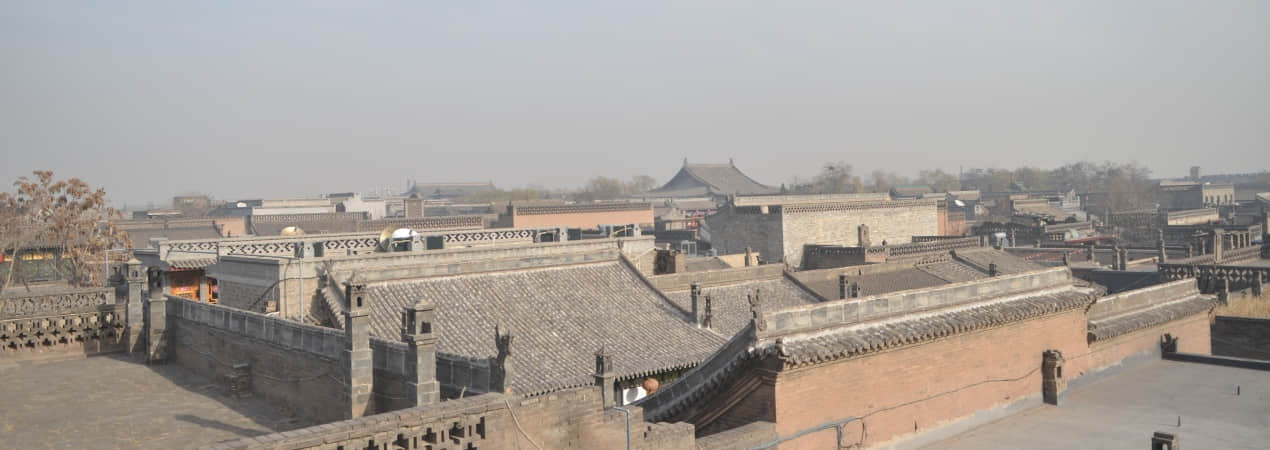
Jinzhong sits in central Shanxi where two mountain ranges meet. Rivers here helped farming and trade grow. This area became a cultural center: Qingming Festival began here, the Niulang-Zhinü love story started here, and Shouyang is known as the birthplace of the Longevity God. Visitors can explore China’s rich traditions through these local treasures.
Table of Contents
What to see and eat in Jinzhong
What to See
Pingyao Ancient City
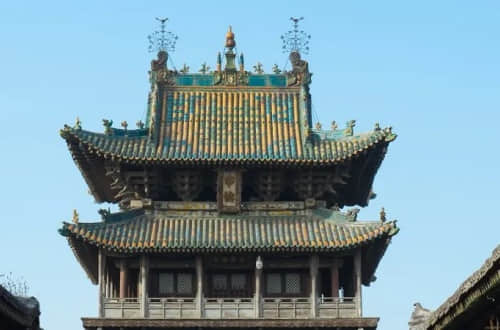 Pingyao Ancient City
Pingyao Ancient CityThe Pingyao Ancient City is a World Heritage Site recognized by UNESCO. It is also the best-preserved Han Chinese city from the Ming and Qing dynasties in China. Often referred to as a "living museum," it condenses 2,700 years of history and has well-preserved city walls, traditional courtyard dwellings, as well as landmark buildings that once shaped China's financial and cultural landscapes.
Shuanglin Temple
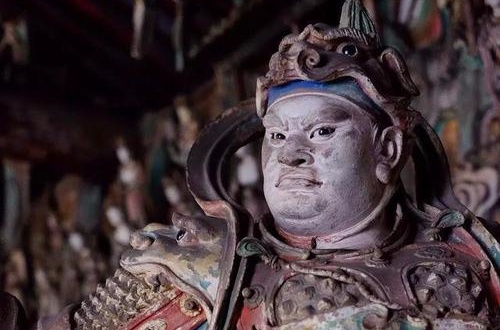 Statue of Skanda
Statue of SkandaShuanglin Temple covers an area of about 15,000 square meters, facing south. The temple is on the east side and the main building complex is on the west side. There are 2,052 exquisite colored sculptures in the temple (1,566 of which are preserved in the protection area), of varying sizes, with extremely high artistic value, representing the pinnacle of Yuan and Ming colored sculptures.
Wang Family Compound
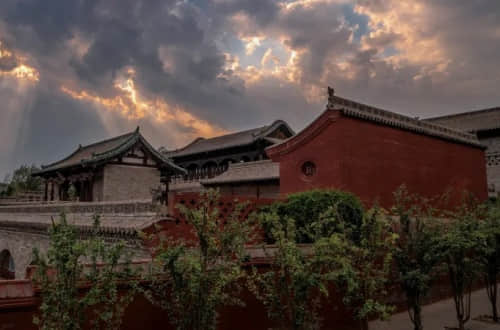 Wang Family Compound
Wang Family CompoundWang Family Compund is a great work of traditional Chinese architecture. It is a clear proof of China's architecture from the imperial times and the history left by the wealthy Wang merchant family. This masterpiece from the Qing Dynasty is often called the "Folk Forbidden City". Its large complex covers an area of 250,000 square meters. Here, defensive buildings, nice living spaces, and detailed artistic works are combined together. As a candidate for UNESCO World Heritage, it can take you on a deep trip to learn about the culture and social spirit of ancient China.
Zhangbi Ancient Castle
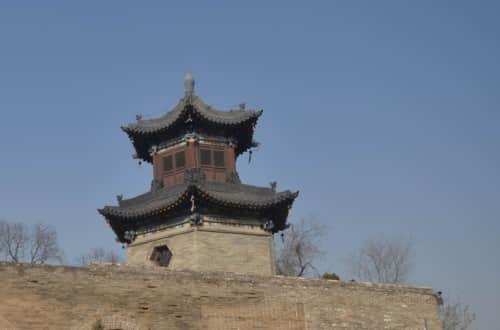 Zhangbi Ancient Castle
Zhangbi Ancient CastleLocated in Shanxi Province, Zhangbi Ancient Castle is a really cool underground fortress. Its history reaches back over 1,400 years. This special place mixes old military defense things, underground tunnels, and traditional buildings from the Ming and Qing dynasties. Because of this, it has turned into one of China's most interesting historical heritages. People often call Zhangbi Ancient Castle "China's Underground Great Wall". And it gives people a rare chance to know a lot about ancient war strategies and village life.
Chang Family Manor
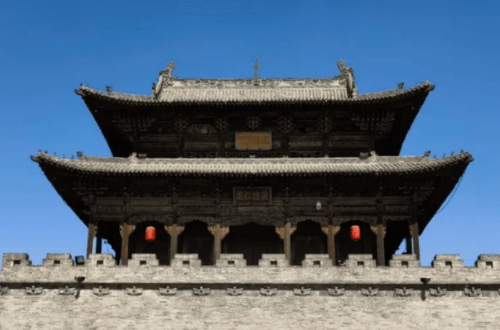 Chang Family Manor
Chang Family ManorChang Family Manor is where the scholarly merchant Chang family in Chewang Village, Dongyang Town, Yuci lived. People first built it during the times of Emperor Qianlong and Emperor Jiaqing in the Qing Dynasty. It covers an area of 600,000 square meters. There are more than 4,000 rooms, more than 50 buildings, and 13 small gardens in it. Its area used to be half of the original village. A war damaged it in 1947, but people restored it later.
Mian Moutain
 Mian Moutain
Mian MoutainNear Pingyao in Shanxi Province stands Mianshan. It combines beautiful scenery with ancient traditions. This holy place is known as the birthplace of the Qingming Festival. The mountain has cliffside temples, green valleys, and waterfalls. Both history lovers and nature fans can enjoy its peaceful environment.
If you're interested, check out our recommended tours and travel tips below:
What to Eat
DaoXiaomian
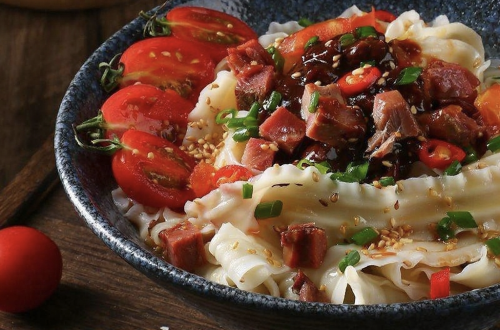 Daoxiaomian
DaoxiaomianDaoXiaomian are a main food in Jinzhong. Cooks press the dough many times, then roll it into a long shape. They use a unique knife to cut thin strips straight into boiling water—like sharpening a pencil. The noodles are pointy at both ends, wider in the middle, shaped like willow leaves. When sliced, they show a triangle. After cooking, dipping them in cold water makes the noodles springy.
Youpo Noodles
Youpo noodles are a Jinzhong specialty. Handmade noodles are boiled and placed in a bowl. Chopped scallions, ground Sichuan pepper, salt, and a thick layer of chili flakes are spread evenly over the noodles. Heated vegetable oil (almost smoking) is poured over the toppings. This releases the aroma. Finally, some soy sauce and black vinegar are added.
Pingyao Beef
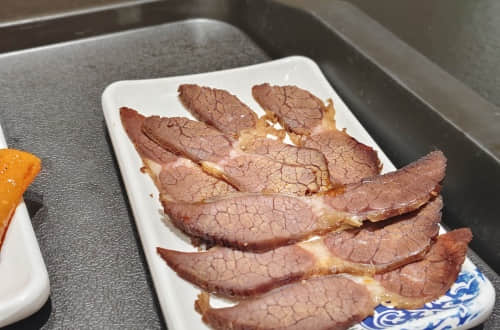 Pingyao Beef
Pingyao BeefPingyao beef is made the old way. Workers marinate the meat, then stew and slow-cook it. They pick ingredients with care. Cooked beef looks reddish. The meat stays tender and tasty. It’s not greasy or tough. This beef is packed with nutrients. Eating it is good for your stomach.
Folk Customs of Jinzhong
Shehuo
Shehuo is a traditional Spring Festival celebration in Chinese folk culture. It includes activities like stilt walks, lion dances, dragon dances, and yangge. These forms vary greatly by region. Every year, Jinzhong holds Shehuo with 50 to 500 people: drum corps, lion dancers, and so on. Locals light firecrackers when the parade comes. They hand out things like cigarettes or alcohol to the performers.
Tips:Shehuo begins on Lunar January 9th and lasts a week. The most vibrant celebrations are in Yuci, Jinzhong—ideal for experiencing traditional folk culture!
Pingyao Polished Lacquerware Craft
Pingyao polished lacquerware craft is a famous handicraft from Jinzhong, Shanxi. Its name comes from rubbing the surface bare-handed until it shines. It tops China’s lacquerware art. This craft is among China’s four most famous types, famous for hand-polishing and painting with gold. It has a 1,000-year history. It began in the Northern Wei Dynasty, grew in the Tang Dynasty, and boomed in the Ming-Qing era.
Tips:Pingyao Ancient City has many lacquerware museums. Yonglong Lacquerware Museum holds a Guinness World Record for 6-meter lacquer chopsticks. Visitors can watch the crafting process here.
Black Pottery
Black pottery is a type of ceramic from ancient China. It uses clay from the middle and lower Yellow River. Other ceramics keep their original color after firing. Black pottery turns deep black like ink. This happens because workers add lots of wood at the final firing stage. They seal the kiln doors and chimneys. The carbon produced turns the pottery black. Jinzhong in the Yellow River basin has rich historical culture. It provides natural high-quality materials for making black pottery.
Jin Opera
Jin Opera started in Jinzhong. It grew there before spreading to central/northern Shanxi, Shaanxi, Inner Mongolia, and Hebei. People in these areas love it. Jin Opera has 10 special skills like feather work (lingzi) and hat-wing techniques. These make performances exciting. Performers sing in turns based on their roles. This brings stories and emotions to life.
What is the weather like in Jinzhong and what is the best time to visit
Jinzhong area has a temperate continental monsoon climate. It has four distinct seasons here. The temperature changes greatly throughout the year. Rainfall mainly concentrates in summer all year round. Winters are usually cold and dry. Summers are warm to hot with large rainfall.
Seasonal Weather Overview
| Jan | Feb | Mar | Apr | May | Jun | Jul | Aug | Sep | Oct | Nov | Dec | |
| High (℃) | 2 | 5 | 12 | 20 | 26 | 30 | 31 | 29 | 24 | 18 | 10 | 3 |
| High(℉) | 35.6 | 41.0 | 53.6 | 68.0 | 78.8 | 86.0 | 87.8 | 84.2 | 75.2 | 64.4 | 50.0 | 37.4 |
| Low (℃) | -10 | -7 | -1 | 6 | 12 | 17 | 20 | 18 | 12 | 5 | -2 | -8 |
| Low(℉) | 14.0 | 19.4 | 30.2 | 42.8 | 53.6 | 62.6 | 68.0 | 64.4 | 53.6 | 41.0 | 28.4 | 17.6 |
| Rain (mm) | 3 | 6 | 12 | 22 | 36 | 55 | 115 | 90 | 55 | 27 | 12 | 3 |
When is the best time to visit Jinzhong
The best times to go to Jinzhong are spring and autumn .
In spring, the temperature gets warm little by little. Around old places like Pingyao and Qiao Family Compound, flowers in bloom make for really beautiful sights. There are a lot fewer visitors than in busy travel times, so you can look around slowly and easily.
Autumn has cool, sunny days, and it’s super cozy. Clear skies make the old buildings here and the nearby Loess Plateau look way prettier. Also, there’s a busy harvest feeling. Fall has important cultural events too. The famous Pingyao International Film Festival is usually in October. It turns the old city into a busy movie spot. Mianshan in mid-October shows off amazing autumn leaves.
What to wear in each season
Dressing appropriately for Jinzhong's distinct seasons is key to comfort.
Spring
Spring has big temperature changes between day and night, and there can be wind, especially early on. Dressing in layers is key: in early spring, you need thermal undershirts, sweaters, and a warm, windproof jacket. As it gets warmer, switch to lighter layers like long - sleeve shirts, cardigans, and a trench coat or light jacket. Comfortable walking shoes are a must for walking on old streets and in courtyards.
Summer
Summer is hot and humid, with sudden rain. Wear light, airy clothes like cotton tees, shorts, skirts, or linen pants. Tough, comfy sandals or breathable sneakers are great for walking. Always bring a small umbrella or rain jacket, sunglasses, a wide - brim hat, and high - SPF sunscreen to protect from strong sun and surprise rain.
Autumn
The autumn of Jinzhong starts pleasantly warm but cools rapidly, especially in the evenings and at higher elevations like Mianshan. Pack versatile layers: long-sleeved shirts, sweaters, vests, and a medium-weight jacket or coat (increasingly important later in the season). Comfortable walking shoes or boots are recommended.
WinterWinter is cold, dry, and windy a lot. Layer up with thermal underwear, thick sweaters or fleeces, a heavy down jacket or warm parka, insulated pants, warm hats, scarves, gloves, and waterproof boots with good grip. These help on icy paths in old city areas.
How to get to Jinzhong
Take the No. 901 airport shuttle bus to Jinzhong city center. There are about 8 trips a day, and the ticket costs only 3 yuan.
By Taxi:Taxis are available at the airport. The ride takes about 30 minutes (depending on traffic) and costs 50 to 80 yuan.
Where to stay in Jinzhong
Comfortable accommodation is the key to a good travel experience. Since choosing the right place to stay matters, we’ve picked 4 hotels below based on quality, price, and transport.
| Hotel Name | Transport | Nearby Attractions | Accommodation | Unique Features | Price Range | Best Booking Time |
|---|---|---|---|---|---|---|
| Pingyao Yide Hotel |
5-min walk (400m) to Rishengchang Exchange Free shuttle from Pingyao Ancient City HSR Station (8km) |
Pingyao City Wall Ming-Qing Street County Government Office |
Qing-style courtyard rooms with heated kang beds Garden-view family suites |
Authentic Shanxi knife-shaved noodles restaurant Free traditional costume photography Electric tricycle tours to Shuanglin Temple |
¥680–¥2,200/night (seasonal) | Early April / Late September |
| Hilton Hampton Jinzhong Yuci |
200m to Yuci East Bus Terminal Free shuttle to Yuci Railway Station (3km) 45-min drive to Pingyao |
Yuci Ancient City Chang Family Compound (15km) Jinci Temple (35km) |
Modern king/queen rooms Family connecting rooms |
24-hour gym & self-service laundry Western-Chinese breakfast buffet Business center with meeting rooms |
¥420–¥980/night | Weekdays (avoid Sept university rush) |
| Hongyuan International Hotel |
10-min drive to Jinzhong CBD Airport shuttle to Taiyuan Wusu (50-min) Direct bus to Qiao Compound (1hr) |
Jinzhong Museum Yushe Karst Park (60km) Mianshan (70km) |
Panoramic city-view rooms Executive suites with tea lounge |
Largest banquet hall in central Jinzhong Indoor heated pool Jin merchant cultural exhibition lobby |
¥580–¥1,600/night | March-May / October-November |
Transportation Between Jinzhong’s Major Attractions
| From → To | Distance | Transport | Time | Notes |
|---|---|---|---|---|
| Pingyao Ancient City → Shuanglin Temple | 6 km | Bus 108 | 15–30 min | Departs from Xiaonan Gate, 30-min intervals |
| Pingyao Ancient City → Zhenguo Temple | 15 km | Bus 209 | 25–40 min | Limited service (~1/hour), verify schedule in advance |
| Pingyao Ancient City → Qiao Family Compound | 35 km | Direct Bus | 45–60 min | Hourly buses from Pingyao Bus Station |
| Pingyao Ancient City → Wang Family Compound | 53 km | Bus + Shared Taxi | 1–1.5 hours | No direct bus; transfer at Lingshi County Bus Station |
| Pingyao Ancient City → Mianshan Scenic Area | 59 km | Drive/Private Transfer | 1.5 hours | No direct public transit; taxis or tours recommended |
| Qiao Family Compound → Chang Family Compound | 12 km | Taxi/Local Minibus | 20–30 min | Minibuses depart irregularly from Qixian County center |
| Jiexiu City Center → Mianshan Scenic Area | 22 km | Tourist Shuttle | 40 min | Departs hourly from Jiexiu Bus Station (seasonal schedule) |
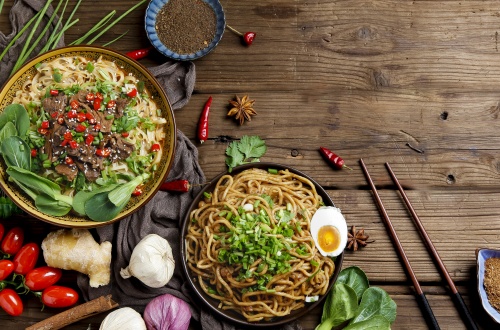 Pingyao Top 9 Foods
Pingyao Top 9 Foods 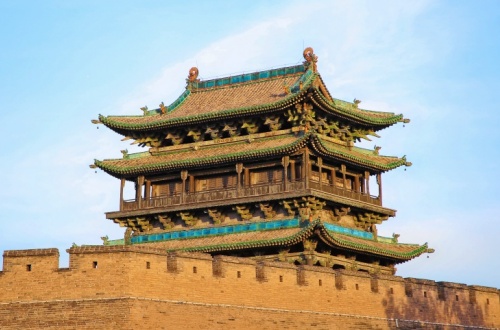 Pingyao Travel Guide
Pingyao Travel Guide 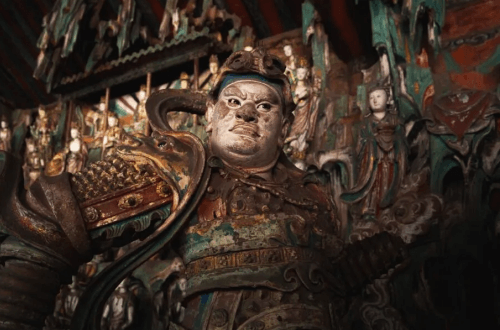 Pingyao Attractions
Pingyao Attractions 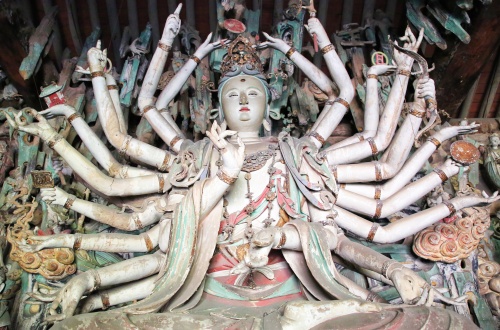 Pingyao Itinerary
Pingyao Itinerary 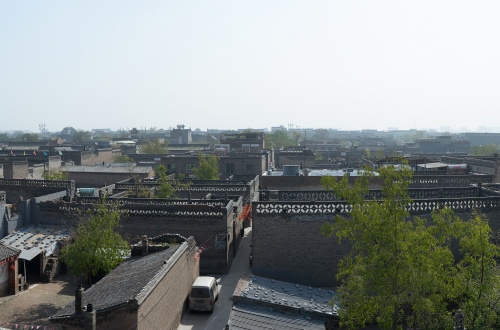 Pingyao Weather
Pingyao Weather